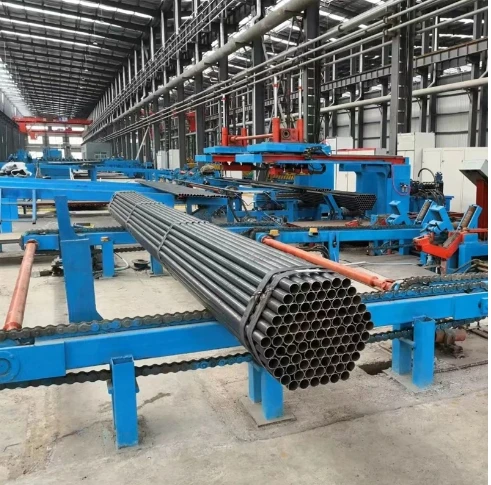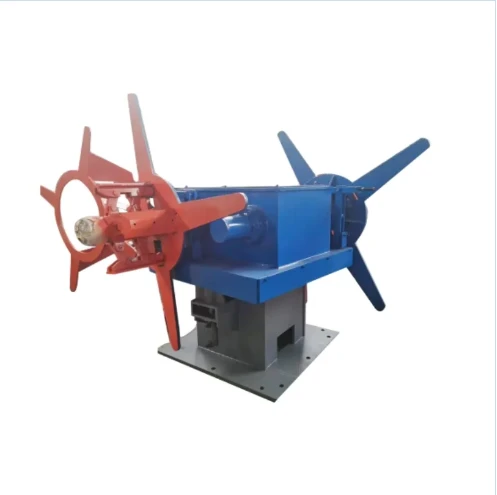Feb . 15, 2025 22:41
Back to list
3d roll forming
The world of manufacturing is continuously evolving, with innovations aiming to optimize efficiency, precision, and cost-effectiveness. Among these innovations, roll forming lines stand out as a pivotal advancement in the metal forming industry. Designed to produce long, uniform pieces of metal by guiding flat sheet metal through a series of contoured rollers, roll forming lines are indispensable tools for manufacturers seeking to maintain competitive edges in their respective markets.
The authority of roll forming lines in industrial manufacturing is well-established. Companies like Samson Roll Formed Products and Bradbury Group, leaders in the roll forming sector, employ state-of-the-art lines to produce components that meet the exacting standards of their clients. Through rigorous testing and quality control measures, these companies have solidified their reputation as reliable producers of high-performance metal products. Industry recognition through certifications and client testimonials further attests to the authority of their manufacturing processes. Trust is a key component in successful business relationships, and the reliability of roll forming lines fosters this trust. With their continuous operation capabilities, manufacturers can confidently meet delivery deadlines, avoiding the costly delays that can occur with less reliable methods. Additionally, the durability of products crafted through roll forming lines assures customers of the longevity and performance of their purchases. This trust in product quality and timely delivery strengthens client relationships and reinforces the manufacturer's reputation in the industry. Moreover, the environmental benefits of using roll forming lines align with the increasing global emphasis on sustainable manufacturing practices. Roll forming is a cold-forming process, meaning it requires less energy than hot-forming methods. This not only reduces the carbon footprint of production but also results in less material waste, as the precise nature of the process minimizes the excess trimming and scrap typical of alternative methods. Companies like Roll-Kraft, which focus on more sustainable operations, demonstrate how roll forming can contribute to a more environmentally conscious industrial landscape. As manufacturing sectors continue to push the boundaries of innovation and efficiency, roll forming lines will remain an integral part of their evolution. By providing unparalleled precision, fostering expertise, upholding authority, and building trust, roll forming lines not only enhance production capabilities but also significantly contribute to the broader goals of sustainable and reliable manufacturing. For businesses aiming to thrive in the competitive landscape, investing in roll forming technology is not just an option—it is a necessity.


The authority of roll forming lines in industrial manufacturing is well-established. Companies like Samson Roll Formed Products and Bradbury Group, leaders in the roll forming sector, employ state-of-the-art lines to produce components that meet the exacting standards of their clients. Through rigorous testing and quality control measures, these companies have solidified their reputation as reliable producers of high-performance metal products. Industry recognition through certifications and client testimonials further attests to the authority of their manufacturing processes. Trust is a key component in successful business relationships, and the reliability of roll forming lines fosters this trust. With their continuous operation capabilities, manufacturers can confidently meet delivery deadlines, avoiding the costly delays that can occur with less reliable methods. Additionally, the durability of products crafted through roll forming lines assures customers of the longevity and performance of their purchases. This trust in product quality and timely delivery strengthens client relationships and reinforces the manufacturer's reputation in the industry. Moreover, the environmental benefits of using roll forming lines align with the increasing global emphasis on sustainable manufacturing practices. Roll forming is a cold-forming process, meaning it requires less energy than hot-forming methods. This not only reduces the carbon footprint of production but also results in less material waste, as the precise nature of the process minimizes the excess trimming and scrap typical of alternative methods. Companies like Roll-Kraft, which focus on more sustainable operations, demonstrate how roll forming can contribute to a more environmentally conscious industrial landscape. As manufacturing sectors continue to push the boundaries of innovation and efficiency, roll forming lines will remain an integral part of their evolution. By providing unparalleled precision, fostering expertise, upholding authority, and building trust, roll forming lines not only enhance production capabilities but also significantly contribute to the broader goals of sustainable and reliable manufacturing. For businesses aiming to thrive in the competitive landscape, investing in roll forming technology is not just an option—it is a necessity.
Prev:
Next:
Latest news
-
High Frequency Straight Seam Welded Pipe Production Line-BzZhou Xinghua Machinery Equipment Manufacturing Co., LTD.|line pipe steel&welded gas pipeNewsJul.30,2025
-
High Frequency Straight Seam Welded Pipe Production Line-BzZhou Xinghua Machinery Equipment Manufacturing Co., LTD.|High Precision&Automated SolutionsNewsJul.30,2025
-
High Frequency Straight Seam Welded Pipe Production Line - BzZhou Xinghua Machinery Equipment Manufacturing Co., Ltd.NewsJul.30,2025
-
High Frequency Straight Seam Welded Pipe Production Line-BzZhou Xinghua Machinery Equipment Manufacturing Co., LTD.|Precision Welding, High EfficiencyNewsJul.30,2025
-
High Frequency Straight Seam Welded Pipe Production Line|BzZhou Xinghua|Precision Welding&EfficiencyNewsJul.30,2025
-
High Frequency Straight Seam Welded Pipe Production Line - BzZhou Xinghua|Precision Engineering&EfficiencyNewsJul.30,2025


